
The Comics Canon - Graphic Novels at Leiden University Libraries
Graphic Novels and Comics have developed from pulp status to an entirely self-contained medium. This form of storytelling is not limited to stories of superheroes but has been used, molded and reshaped to display historical events, classic stories and autobiographical memoirs. But where should you begin in such a vast landscape and with a myriad of genres? Leiden University Libraries possesses a broad collection and has selected an overview of some of the most important contemporary titles.
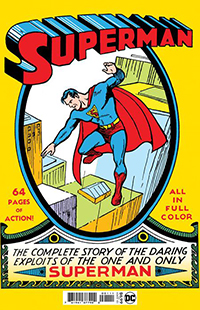
Superman
Jerry Siegel and Joe Shuster
1938-present
The history of the American comic book begins with Superman. The Leiden collection includes, in addition to other Superman publications, a reprint of the original stories. There, we see how Superman starts his career as a rebel, who takes on city administrators and factory bosses both with and without a cape (he has an alter ego as an investigative journalist) and then becomes increasingly tame as the comic develops. The collection also includes several analyses of Superman's adventures, which are very worthwhile.
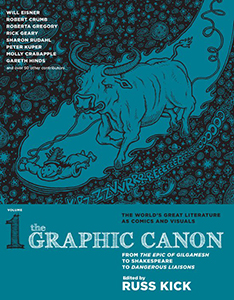
The Graphic Canon
Russ Kick
2012
In the wake of Superman and other superhero stories, comics have now grown into a literary genre. Its origins lie in the depiction of literary classics. Russ Kick shows that this can be done in many different ways with an anthology of comics adaptations of the best stories from world literature. He shows the maturity, breadth and depth of the contemporary comic world and gives extensive reading tips.
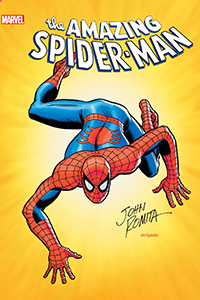
The Amazing Spider-Man
Stan Lee, Steve Ditko and Jack Kirby
1962-present
In the 1960s, American comics experienced a true renaissance. Led by Stan Lee, Marvel Comics launched a whole new universe of humanized superheroes with ordinary-people problems, like the Fantastic Four, the Hulk, the X-men and Spider-Man. Peter Parker may have the strength of a spider, but just like ‘us’ he struggles with money worries, work, family and relationship problems. Through a clever mix of soap opera and superheroics, Marvel managed to attract a growing fan base.
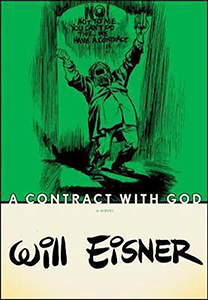
A Contract with God
Will Eisner
1978
Will Eisner is sometimes mentioned as the godfather of the graphic novel. He belongs to the first group of big names in the 1930s comic industry. Later in his career he realised that the children who used to read his superhero comics were now adults who were not solely interested in reading about battling superheroes. This inspired him to write a more mature pictorial story about the Jewish community in New York at the beginning of the twentieth century. In this series of autobiographical inspired tales Eisner describes the (mis)fortunes of this migrant community with the fictional street Dropsie Avenue as a backdrop.
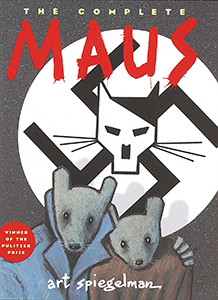
Maus: A Survivor's Tale
Art Spiegelman
1980-1991
In Maus: A Survivor's Tale Art Spiegelman tells the story of his father, a Holocaust survivor, and their difficult relationship. We not only follow his father through the horrors of the Shoah, but also Art himself, as he tries to get his story on paper. How do you write about the Shoah without reducing the victims to background characters, and how should you illustrate this? Maus is not only an important narrative in the Holocaust literature, but also a pivotal work for the further development of the graphic novel as a medium for autobiographical work.
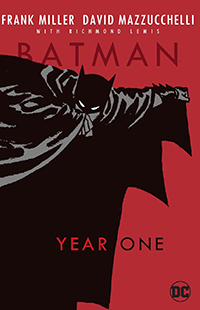
Batman: Year One
Frank Miller and David Mazuchelli
1987
In 1986 and 1987, Frank Miller wrote two canonical stories about the beginning and end of Batman's career as a superhero (see also this video). Year One was groundbreaking because it reduced Batman to an ordinary man with ordinary enemies. Instead of the Joker and Penguin, Batman had to fight mafiosi and their corrupt henchmen within the police apparatus. This created a sober and dark detective story, against the backdrop of a decaying city. Never before had a Batman story been so close to reality.
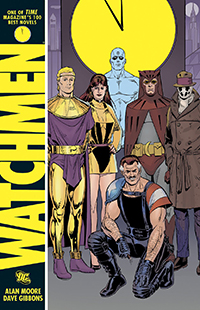
Watchmen
Alan Moore and Dave Gibbons
1987
With Watchmen, Alan Moore built a bridge between American comics and literature. The story is set up as an alternative history in which Moore examines how the American twentieth century would have turned out if superheroes had really existed. Confronted with the Cold War and the student movement of the sixties, Moore's characters (superheroes) have to reflect on their strengths, limitations and role in history, while Moore does the same for comics as a genre. By introducing self-reflection, Moore raised the entire medium to a higher level.
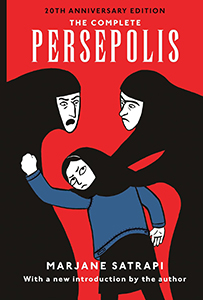
The Complete Persepolis
Marjane Satrapi
2000
In Persepolis we follow the life of Marjane Satrapi. It is an autobiographical memoir about her childhood in Teheran in the 1980s and the growing tensions that arose after the Islamic revolution of 1979. The sober style of the illustrations tells a complex story of the clash between youthful innocence and the horrors of war. In the second part of Persepolis, we read about Marjane's return to Iran after she left for Austria as a teenager, and how she seems to exist between these two worlds that both are filled with conflict, hypocrisy and fighting for what you think is of importance.
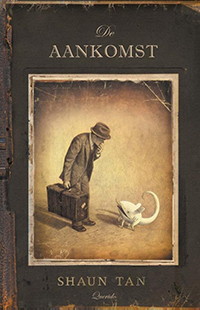
De Aankomst
Shaun Tan
2008
This book tells the story of a man that leaves his family behind and travels to an unfamiliar land in search for better circumstances. There, he must find his way in a world that is unfamiliar, new and unpredictable. The book consists of wordless illustrations full of imaginative figures and surroundings, which makes the wonder and disorientation tangible for the reader. The Australian illustrator Shaun Tan shows just how broad the term comic or graphic novel can be.
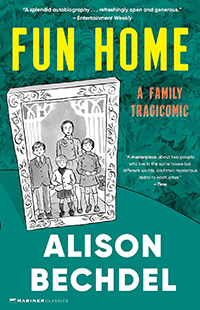
Fun Home: A Family Tragicomic
Alison Bechdel
2009
Growing up in a home that also functions as a funeral home, with an obsessive-compulsive father and strained family relations. Alison Bechdel uses the form of the graphic novel to tell a story of her childhood and themes such as sexual orientation, gender and her relationship with her father. What they share and how they differ. The book inspired not only a musical but was also pivotal in the development of the comic as a serious subject of literary research.
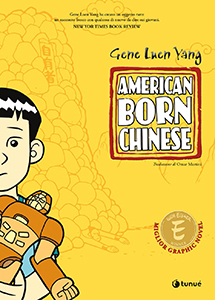
American Born Chinese
Gene Luen Yang
2009
Yang cleverly weaves together stories about growing up in the US, inclusion and exclusion, and American vs. Chinese pop culture. Jin is the son of immigrants and wants nothing more than to ‘fit in’ at his new school but is excluded because of his Chinese roots. Teenage Danny already fits in, until his Chinese cousin Chin-Kee visits and ridicules him for his stereotypical Chinese behavior. The popular Chinese folktale of the Monkey King must come into play and help the boys come to terms with their identity and environment.
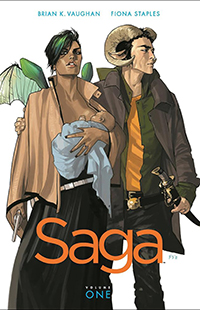
Saga
Brian K. Vaughan and Fiona Staples
2012-2018
Despite – or perhaps because of – the rise of superhero comics and movies, indy comics experienced a period of growth around 2010, with titles such as Walking Dead, Y: The Last Man and Saga. Saga tells the story of Alana and Marko, descendants of two warring planets who are on the run because of their love and their kind. Little by little we get to know Alana, Marko and their environment, including the political intrigues on and between interplanetary realms.
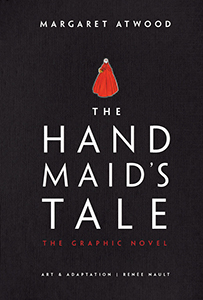
The Handmaid’s Tale
Margaret Atwood, adapted by Renee Nault
2019
The iconic book The Handmaid's Tale by Margaret Atwood is a classic work of fiction in its own right. In 2019 it was reinterpreted as a graphic novel by the illustrator Renee Nault. It's a good example of the growing genre of “graphic novel adaptations of classic literature". While many stay close to the original text, Nault takes a more liberal approach, building on Atwood's work and expending it with her own interpretations.
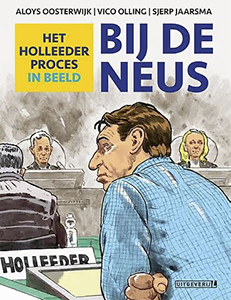
Bij de Neus: het Holleeder-proces in beeld
Aloys Oosterwijk, Vico Olling and Sjerp Jaarsma
2019
This book is an example of graphic journalism, a relatively new genre in the Netherlands, which is remarkable given the great success of true crime literature. Oosterwijk was present as a court artist at the Holleeder trial, after which Olling and Jaarsma supplemented 300 drawings with text and background information, creating a full-fledged book. It was the start of a new genre, because in the meantime a graphic novel has also been published about Taghi and the Marengo trial.
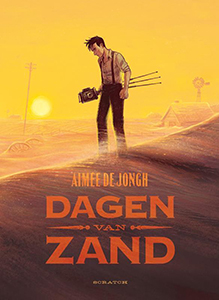
Dagen van Zand
Aimée de Jongh
2021
In 1937, young photographer John is sent to Oklahoma, which is plagued by enormous sandstorms. The once fertile land has turned into a Dustbowl, evoking images from Grapes of Wrath and Interstellar. Initially, John is driven by blind ambition to prove himself as a photographer, but over time he becomes increasingly aware of the suffering that the local population is struggling with. With this book, Dutch comic artist Aimée de Jongh made her international breakthrough.
Contact us
Is a book missing from this list and would you like the UBL to acquire this title for you to borrow? Contact us via Ask a Librarian.
